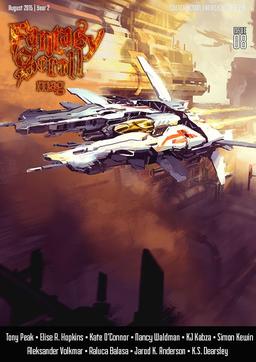Future Treasures: Deadlands: Ghostwalkers by Jonathan Maberry
 I’m a big fan of weird westerns, and I think at least part of that stems from my early interest in Deadlands, the classic Weird Western RPG first published by Pinnacle in 1996. It’s one of the most original and inventive games of my acquaintance, and a terrific adventure setting.
I’m a big fan of weird westerns, and I think at least part of that stems from my early interest in Deadlands, the classic Weird Western RPG first published by Pinnacle in 1996. It’s one of the most original and inventive games of my acquaintance, and a terrific adventure setting.
So I was excited to see Pinnacle partner with bestselling author Jonathan Maberry (Rot & Ruin, Dead of Night), to launch a line of Deadlands novels. The first, Ghostwalkers, goes on sale later this month from Tor.
Welcome to the Deadlands, where steely-eyed gunfighters rub shoulders with mad scientists and dark, unnatural forces in the Weirdest West of all. Where the Great Quake of 1868 has shattered California into a lawless labyrinth of sea-flooded caverns… and a mysterious superfuel called “ghost rock” sparks as much greed and bloodshed as it does miraculous new machines and weapons of destruction.
Grey Torrance is a hired gun literally haunted by the bloody specters of his past. Heading west with no particular destination in mind, he joins forces with a brilliant Sioux scientist to defend the struggling town of Paradise Falls from a diabolical madman out to take over the entire territory… and build an army of the living dead!
It’s about time the market realized the potential of this great setting. Anything that gleefully mixes steampunk, zombies, RPGS, and the Weird West is A-OK in my book.
Deadlands: Ghostwalkers will be published by Tor Books on September 22, 2015. It is 480 pages, priced at $15 in trade paperback and $9.99 for the digital edition. The cover art is by Aaron Riley.
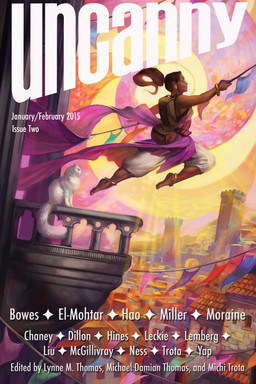


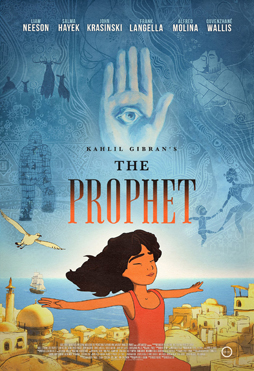 Sunday, August 2, was a day I’d been waiting for and slightly dreading. I was planning to see five films, one after the other. All of them at the large Hall Theatre, except for the second, a presentation of short animated films at the De Sève. It would kick off at 12:30 with Kahlil Gibran’s The Prophet, a cartoon adaptation of the classic book. The Outer Limits of Animation 2015 showcase would follow. Then Experimenter, a biopic about controversial psychologist Stanley Milgram, he of the notorious fake electroshock experiments. Then Ninja the Monster — as its title suggests, a film about a confrontation between a ninja and a monster. Finally would come Strayer’s Chronicle, a novel adaptation about a group of alienated teenagers with strange powers fighting to protect a world that hates and fears them. I was fairly sure it was possible to make a good movie out of that sort of material. But I had a lot of film to watch before I’d get to see it.
Sunday, August 2, was a day I’d been waiting for and slightly dreading. I was planning to see five films, one after the other. All of them at the large Hall Theatre, except for the second, a presentation of short animated films at the De Sève. It would kick off at 12:30 with Kahlil Gibran’s The Prophet, a cartoon adaptation of the classic book. The Outer Limits of Animation 2015 showcase would follow. Then Experimenter, a biopic about controversial psychologist Stanley Milgram, he of the notorious fake electroshock experiments. Then Ninja the Monster — as its title suggests, a film about a confrontation between a ninja and a monster. Finally would come Strayer’s Chronicle, a novel adaptation about a group of alienated teenagers with strange powers fighting to protect a world that hates and fears them. I was fairly sure it was possible to make a good movie out of that sort of material. But I had a lot of film to watch before I’d get to see it.
 Saturday, August 1, would start early for me at Fantasia. At 12:30 I was seeing a Chinese fantasy adventure called Snow Girl and the Dark Crystal. Then I’d head over to the screening room, where I planned to watch a documentary about the Turkish film industry, Remix, Remake, Ripoff: About Copy Culture and Turkish Pop Cinema. Then I’d go to the De Sève Theatre for a pair of films, the post-apocalypse art-house movie Orion and then the Korean drama Socialphobia. Once again, a nice varied day.
Saturday, August 1, would start early for me at Fantasia. At 12:30 I was seeing a Chinese fantasy adventure called Snow Girl and the Dark Crystal. Then I’d head over to the screening room, where I planned to watch a documentary about the Turkish film industry, Remix, Remake, Ripoff: About Copy Culture and Turkish Pop Cinema. Then I’d go to the De Sève Theatre for a pair of films, the post-apocalypse art-house movie Orion and then the Korean drama Socialphobia. Once again, a nice varied day.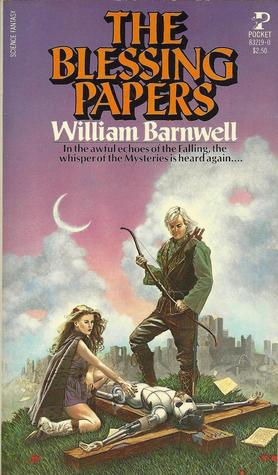
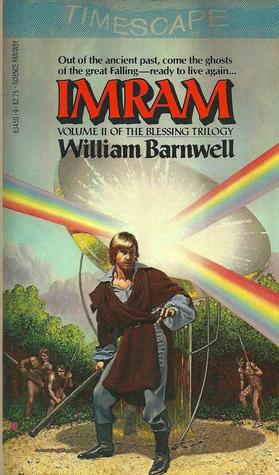
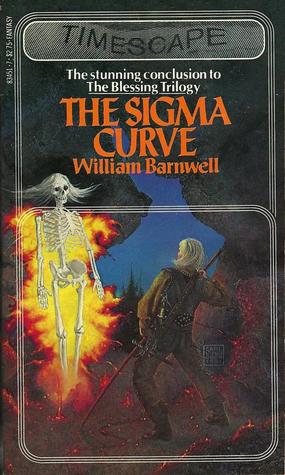
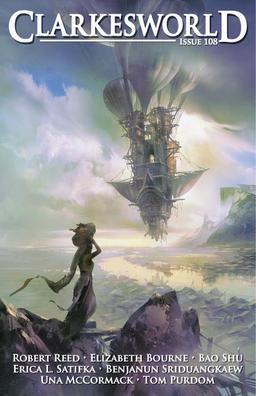
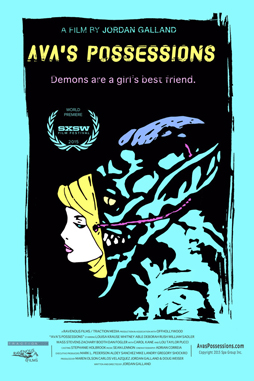 Friday, July 31, started late for me at Fantasia. My first movie, a horror-comedy called Ava’s Possessions, screened at the Hall Theatre at 5:15. After that I decided to watch the Indonesian wuxia movie The Golden Cane Warrior. Then I’d go across to the De Sève Theatre to catch the surreal science-fictional American-Argentinian movie H. before returning to the Hall for the Friday midnight movie, a Quebec-made tribute to 80s post-apocalypse action movies called Turbo Kid. That would carry me through to something like 2 AM. So if things started late, at least it looked like I had a lot on the agenda.
Friday, July 31, started late for me at Fantasia. My first movie, a horror-comedy called Ava’s Possessions, screened at the Hall Theatre at 5:15. After that I decided to watch the Indonesian wuxia movie The Golden Cane Warrior. Then I’d go across to the De Sève Theatre to catch the surreal science-fictional American-Argentinian movie H. before returning to the Hall for the Friday midnight movie, a Quebec-made tribute to 80s post-apocalypse action movies called Turbo Kid. That would carry me through to something like 2 AM. So if things started late, at least it looked like I had a lot on the agenda.